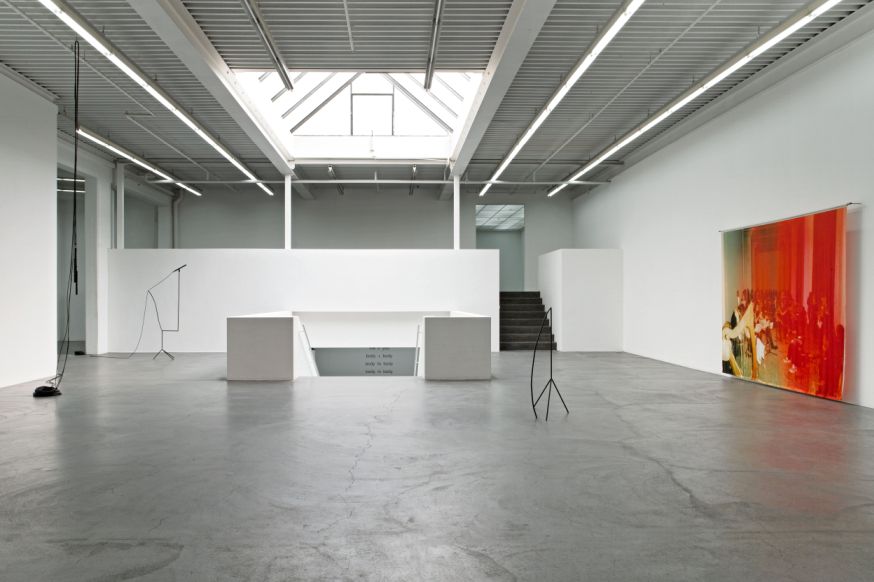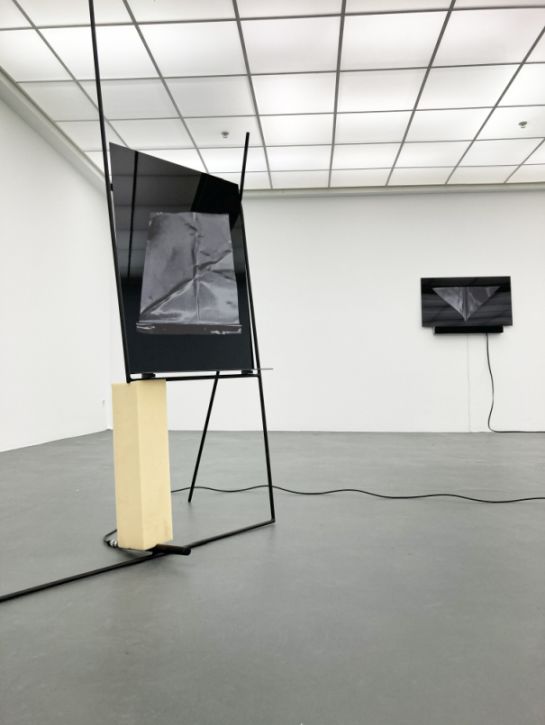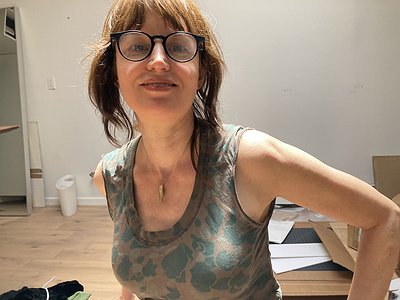Part 2
Collaborations can take on many forms. What role do they play in your approach and what are your preferred ways of engaging with other creatives through, for example, file sharing, jamming or just talking about ideas?
Collaboration has always been really important. My early compositions were entirely made up of collaborative ensembles that I directed. I learned how to do this of course by collaborating with other people’s groups and being part of other people’s concepts.
The downtown NYC scene in the aughts was for me all about weekly meetups and improvised music. I currently play with Ben Vida as a duo, though we perform infrequently. We are about to release our third collaboration (on 901 editions in Italy). [Read our Ben Vida interview]
But the main way I am collaborating right now is through giving scores or concepts to musicians, especially my adored inner circle: the pianist Marino Formenti, the cellist Okkyung Lee and the drummers Greg Fox and Eli Keszler. [Read our Eli Keszler interview] These folks are deep level thinkers and agents of experimentation and exploration that I fully trust. Marino takes the scores I generate from the Deathstar project (Shelter Press, 2020) and quite literally teaches me what is in them. Okkyung probes a space as no other and has been part of my work for 20 years. Greg and Eli have run with another work— GREATEST HITS, also coming out in 2021 on Info Ultd.— where they translate my turntable playlists and scores into incredible dense, overlapping rhythmic patterns.
Take us through a day in your life, from a possible morning routine through to your work, please. Do you have a fixed schedule? How do music and other aspects of your life feed back into each other - do you separate them or instead try to make them blend seamlessly?
My studio is part of my house so I am there a lot of the day. I have almost grown kids— which sometimes surprises people! So we are full house and family is important over here at meal time, at least.
I do not have a fixed schedule of work. I play my piano a little bit almost every day to keep my mind sharp or my hands flexible or whatever it is that that means to me on a rolling basis. And I struggle against the sort of material chaos that is my natural way, but that I’ve learned isn’t the best for me.
Can you talk about a breakthrough work, event or performance in your career? Why does it feel special to you? When, why and how did you start working on it, what were some of the motivations and ideas behind it?
In 2008, I premiered the work "Teenage Lontano". This is a composition for teenagers performing a ‘cover version’, essentially, of the Ligeti orchestral work "Lontano". I took over the massive soundfield of the Park Avenue Armory in New York for the premiere and saturated the space with my most complex speaker installation to date as well as dozens of live voices.
I guess this was an important moment for me, because I felt the work’s criticality and its pure sensuousness were inextricable and interconnected. I worked on it for about 18 months, transcribing the notes of this short Ligeti piece by voice and ear, for headphones scores for all the teens I got involved. I was fortunate that at the time the curator Shamim Momin was putting together a Whitney Biennial exhibition, and was really receptive to the idea and gave me all the resources I needed to mount it, which were considerable. It was also the first piece where I worked with so many organizations and engineers, including the legendary Bob Bielecki, Arup acoustics, Art Production Fund …
In terms of how I started working on it, I would have to say, like some of my other works, it came to me almost whole as an idea— or as a problem, a confrontation: New York teenagers, a cohort of fully contemporary, fully technologized and mediated beings, and peak high modern Ligeti? It just took time to do, and to convince others to help me do it.
There are many descriptions of the ideal state of mind for being creative. What is it like for you? What supports this ideal state of mind and what are distractions? Are there strategies to enter into this state more easily?
I don’t know! Focus or distraction, which is better?
[“We’ll start a fire,” installation view, Kunsthaus Baselland. Image by Gina Folly]
Music and sounds can heal, but they can also hurt. Do you personally have experiences with either or both of these? Where do you personally see the biggest need and potential for music as a tool for healing?
Well, any woman participating in the history of music is pushing back against an edifice of exclusion and harm. This was true when Pauline Oliveros said it in 1970 and true when I was compelled to mount my feminist music ensembles in the early 90s, and it is true today.
For me the question therefore might not be to harm or to heal, but to participate in new world-making in what way? To compose and to improvise— two unorthodox choices for a woman in historical terms— have both offered me productive, sometimes resistant frameworks to think through in this respect.
There is a fine line between cultural exchange and appropriation. What are your thoughts on the limits of copying, using cultural signs and symbols and the cultural/ social/gender specificity of art?
I would always argue for care and attention on a case by case basis, sensitivity to difference, and ultimately, for the value of risk. It’s hard to imagine a positive outcome to a world where intellectual property is so strictly controlled that new interpretations of existing cultural signs are forbidden. But like in all other domains, in music there have been and continue to be exploitative relations between groups, between users and owners, innovators and popularizers— and of course these inequalities are frequently racialized and gendered.
One of the things that I look to improvisation for, especially collective improvisation, is that it is a framework for facing material conditions in real time: What is here? Who is being heard? How do I sound and what am I saying? How do you sound and what are you saying? How are we reflecting or amplifying or interrupting or entangling with each other, a space, an audience? Any serious improviser understands the ethical dimensions of these questions. As I have shifted more into working with images and sculpture, I am trying to bring this ethical framework with me.
Our sense of hearing shares intriguing connections to other senses. From your experience, what are some of the most inspiring overlaps between different senses - and what do they tell us about the way our senses work?
I’m very galvanized by this question, especially in relation to shapes of listening, and even the visualization of these shapes, which is a subject matter of some of my recent work. I like to speculate about the shape of listening, and I think the social, contingent aspect of it— i.e. the non-scientific, not entirely phenomenological part of listening— is important and often overlooked when artists get excited about innovations, science and engineering and so on.
As a culture we are so flooded with images and in a way, that makes image-making attractive, democratic, and accessible. Album cover art, at one time, participated in this dynamic of drawing in listeners and offering a visual field to build a listening upon. I think in our current cultural conditions, popular artists have gone kind of berserk making themselves into images. I’m not that fascinated by looking at the sequin- and diamond-festooned bodies of musicians, for instance.
In my own case, at least, my senses— or what I like to call, my sensorium— is more dialled up by less, than more. I guess I’m arguing for some space around things, which is one of the pathways that led, for me, to sculpture.
[“We’ll start a fire,” installation view, Kunsthaus Baselland. Image by Marina Rosenfeld]
Art can be a purpose in its own right, but it can also directly feed back into everyday life, take on a social and political role and lead to more engagement. Can you describe your approach to art and being an artist?
Oh my goodness, that is a large-scale question. I can’t answer it in a few words. Being an artist defines me, motivates me, sustains me, causes me joy and anguish, and is fully entangled with my life. I believe in art for the sake of art, or I wouldn’t devote so much of my life to it. I believe all work is political in its way, and also that there are limits to its political or practical efficacy and that’s where other kinds of political action should take over if you care about what’s happening in this world.
What can music express about life and death which words alone may not?
Is it Adorno who says that music gives solace, and that is its biggest problem? I think I’m paraphrasing something from the unfinished book on Beethoven.









